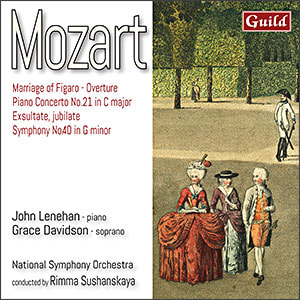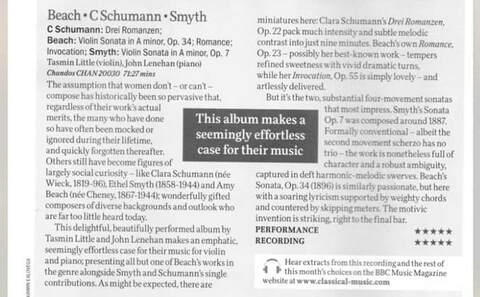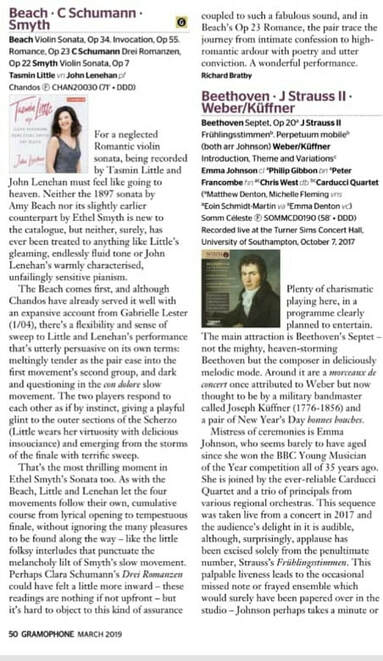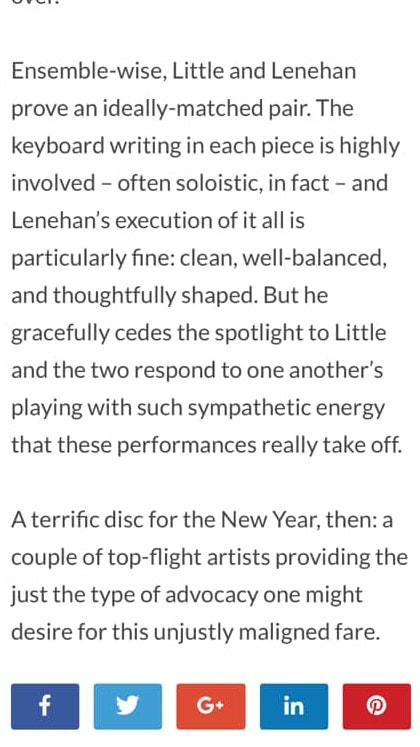Recent Reviews

Classicalsource.com (September 2019)
The National Symphony Orchestra is not a familiar name today in classical record circles, although older collectors will undoubtedly know of it from an extensive series of recordings for Decca from the mid-1940s. However, the NSO is the longest-established fully professional freelance orchestra in Britain, better-known for film and television work. Recently, under Sushanskaya, the NSO has undertaken several classical concerts, principally in London, as well as making recordings, of which this Mozart is the first.
It is superb. Throughout, the fine playing exudes a sense of music-making of rare excellence, fully up to the stature of the music and recalling early concerts of the English Chamber Orchestra and Academy of St Martin in the Fields. The Marriage of Figaro Overture is quite wonderfully performed in a manner that renders attempts at recreating century pitch or performance ‘styles’ of 250 years ago irrelevant. This is genuine music-making by wholly experienced professionals seeking to impart their love of great music.
I have not heard such an utterly convincing and uplifting account of this piece since the days of Sir Thomas Beecham. To follow, that sterling artist John Lenehan is the soloist in K467. From the beginning of the exordium the orchestra is flawless, and Lenehan’s contribution is full of sparkling sensitivity whilst letting the music breathe, so much more perceptive than the rather self-conscious Mozart-playing indulged in by many pianists today. The sense of character here, classically disciplined, is surely what was in Mozart’s mind. (The outer-movement cadenzas, intriguing and enjoyable, are not credited in Guild’s annotation; a quick bit of research reveals that they are Lenehan’s own – Ed.)
In Exsultate, jubilate Grace Davidson is also excellent. Her phrasing and tone-colour are admirable, musically and technically too, and she is very sympathetically partnered. In the G-minor Symphony (as revised, with clarinets) Sushanskaya is most impressive; the internal balance is ideal, the musicians listening to one another as if chamber-playing, keeping the listener anchored to the spot. Her tempos are excellent; the overall accomplishment is admirable.
The recording was made in one day. These performers did not need multiple takes in order to ‘get it right’: here is re-creative musical spontaneity of high quality, rare in classical sessions, and here beautifully captured by Tony Faulkner.
The National Symphony Orchestra is not a familiar name today in classical record circles, although older collectors will undoubtedly know of it from an extensive series of recordings for Decca from the mid-1940s. However, the NSO is the longest-established fully professional freelance orchestra in Britain, better-known for film and television work. Recently, under Sushanskaya, the NSO has undertaken several classical concerts, principally in London, as well as making recordings, of which this Mozart is the first.
It is superb. Throughout, the fine playing exudes a sense of music-making of rare excellence, fully up to the stature of the music and recalling early concerts of the English Chamber Orchestra and Academy of St Martin in the Fields. The Marriage of Figaro Overture is quite wonderfully performed in a manner that renders attempts at recreating century pitch or performance ‘styles’ of 250 years ago irrelevant. This is genuine music-making by wholly experienced professionals seeking to impart their love of great music.
I have not heard such an utterly convincing and uplifting account of this piece since the days of Sir Thomas Beecham. To follow, that sterling artist John Lenehan is the soloist in K467. From the beginning of the exordium the orchestra is flawless, and Lenehan’s contribution is full of sparkling sensitivity whilst letting the music breathe, so much more perceptive than the rather self-conscious Mozart-playing indulged in by many pianists today. The sense of character here, classically disciplined, is surely what was in Mozart’s mind. (The outer-movement cadenzas, intriguing and enjoyable, are not credited in Guild’s annotation; a quick bit of research reveals that they are Lenehan’s own – Ed.)
In Exsultate, jubilate Grace Davidson is also excellent. Her phrasing and tone-colour are admirable, musically and technically too, and she is very sympathetically partnered. In the G-minor Symphony (as revised, with clarinets) Sushanskaya is most impressive; the internal balance is ideal, the musicians listening to one another as if chamber-playing, keeping the listener anchored to the spot. Her tempos are excellent; the overall accomplishment is admirable.
The recording was made in one day. These performers did not need multiple takes in order to ‘get it right’: here is re-creative musical spontaneity of high quality, rare in classical sessions, and here beautifully captured by Tony Faulkner.
Gramophone - March 2019Older reviews please see the archive here
|
BBC Music Magazine- March 2019
Artsfuse.org - February 2019 |

